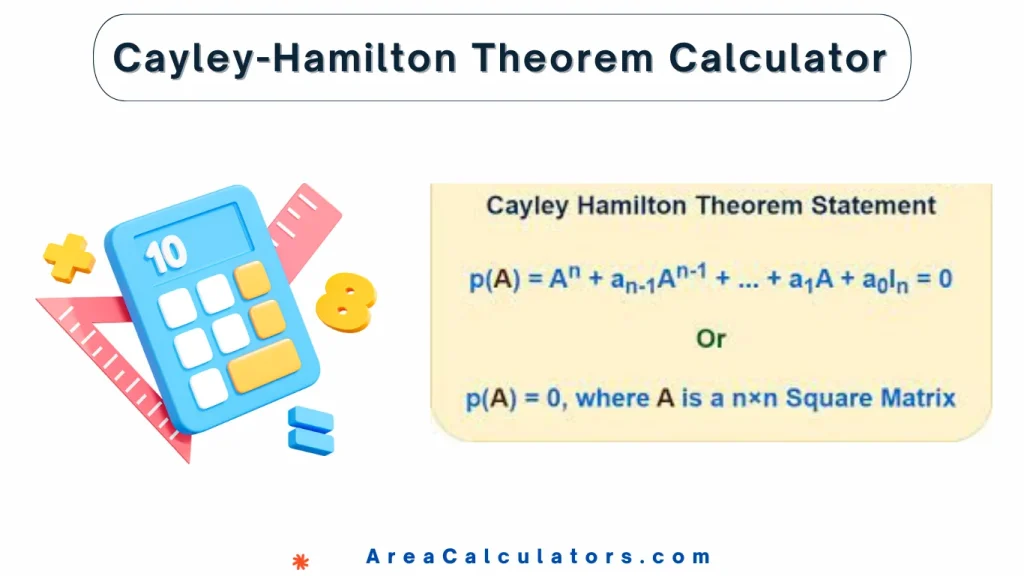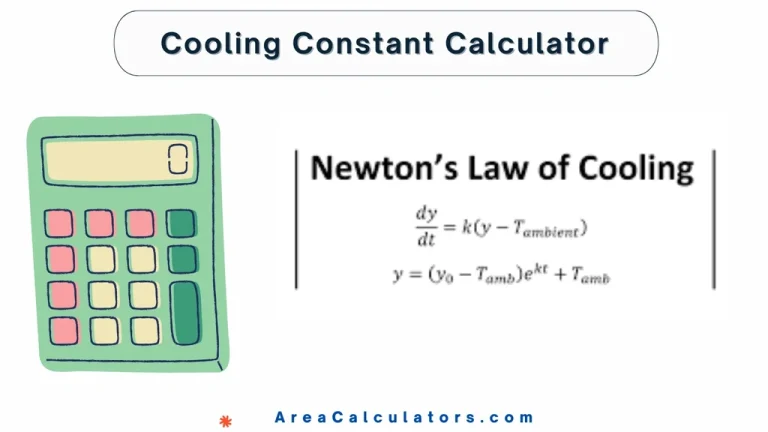Cayley-Hamilton Theorem Calculator
To apply the Cayley-Hamilton theorem, compute the trace of matrix A (sum of the diagonal elements) and its determinant. Then, use the characteristic equation λ² − (trace(A))λ + det(A) to verify if the matrix satisfies the theorem.
The Cayley-Hamilton Theorem Calculator is a powerful tool for solving matrix problems by applying the Cayley-Hamilton theorem, which states that every square matrix satisfies its own characteristic equation. This theorem is useful in linear algebra for finding matrix powers, inverses, and characteristic polynomials.
Whether you’re working with a 2×2 or 3×3 matrix, this calculator helps solve problems efficiently. For students and professionals alike, this tool simplifies complex calculations related to the Cayley-Hamilton theorem, providing accurate results for tasks like finding A^100 or using the theorem for matrix exponentiation in real-world applications.
Formula:
The Cayley-Hamilton Theorem is expressed by the following formula:
| Variable | Meaning |
|---|---|
| λ | Eigenvalue of the matrix |
| trace(A) | Sum of the diagonal elements of matrix A |
| det(A) | Determinant of matrix A |
Solved Calculations:
Example 1:
Given the following 2×2 matrix A:
Step 1: Calculate the trace of matrix A
The trace is the sum of the diagonal elements:
Step 2: Calculate the determinant of matrix A
The determinant of a 2×2 matrix is calculated as:
Step 3: Write the characteristic equation
Using the formula λ² − (trace(A))λ + det(A), we substitute the values:
Answer: The characteristic equation is λ² − 5λ + 5 = 0

Example 2:
Given the following 2×2 matrix B:
Step 1: Calculate the trace of matrix B
Step 2: Calculate the determinant of matrix B
Step 3: Write the characteristic equation
Using the formula λ² − (trace(B))λ + det(B):
Answer: The characteristic equation is λ² − 8λ + 12 = 0
What is Cayley-Hamilton Theorem ?
The Cayley-Hamilton theorem is a fundamental concept in linear algebra, stating that any square matrix satisfies its own characteristic equation. This means that for a given matrix A, if you calculate the characteristic polynomial, you can substitute the matrix into the polynomial to find powers or inverses of the matrix.
This makes it all easy. It enables you to input matrices and calculate results like matrix powers, such as A^100, or finding the inverse of a matrix. For example, the Cayley-Hamilton theorem for a 2×2 matrix can help you efficiently calculate higher powers without manual matrix multiplication.
Using the Cayley-Hamilton theorem is not only useful for calculating matrix powers but also for solving more complex problems in linear algebra. This tool helps you understand the matrix’s behavior and relationships between its eigenvalues and eigenvectors.
In addition to that, it provides step-by-step solutions to common problems, such as finding the characteristic polynomial or using the Cayley-Hamilton theorem for larger matrices like 3×3 or 4×4 matrices.




